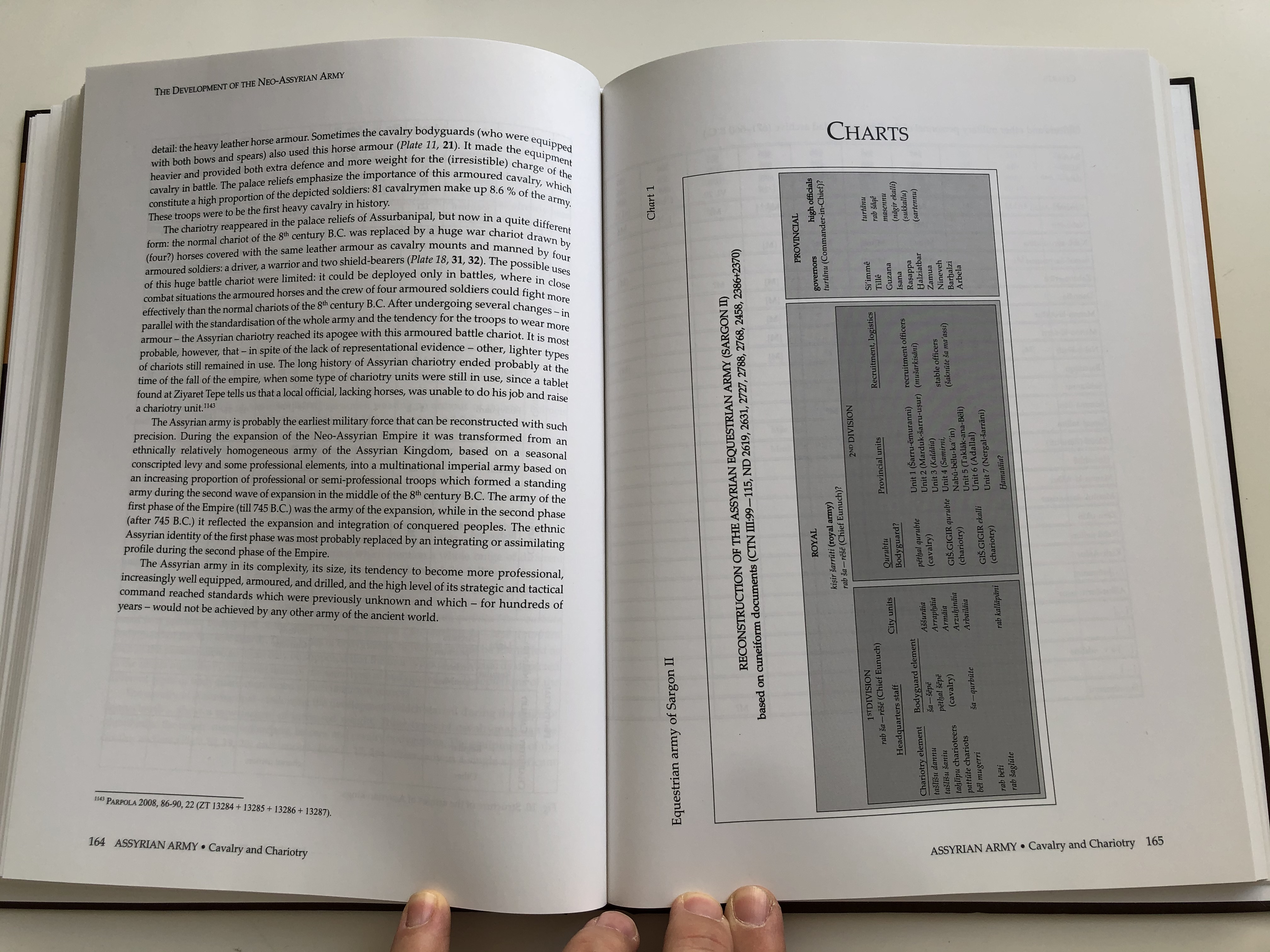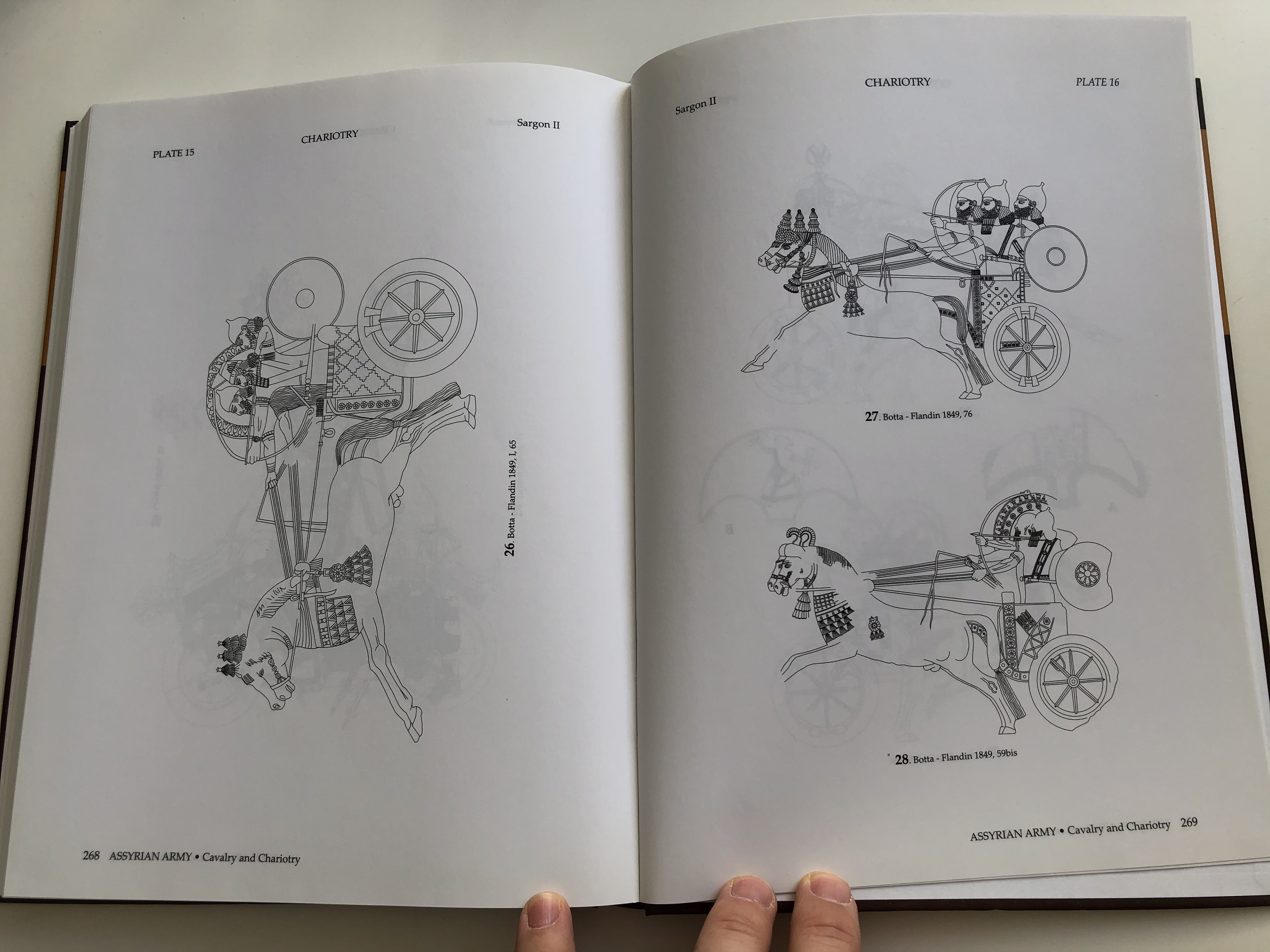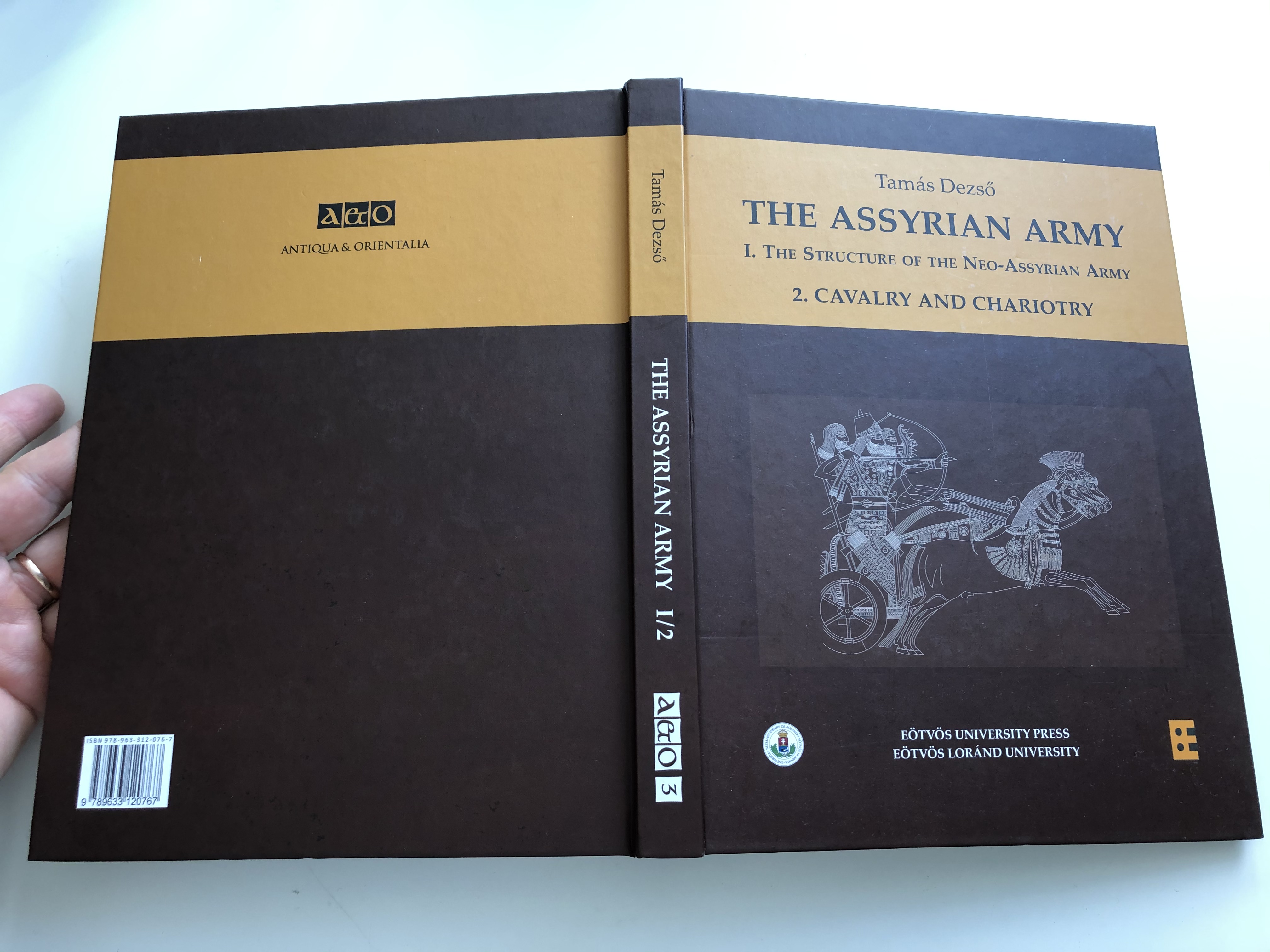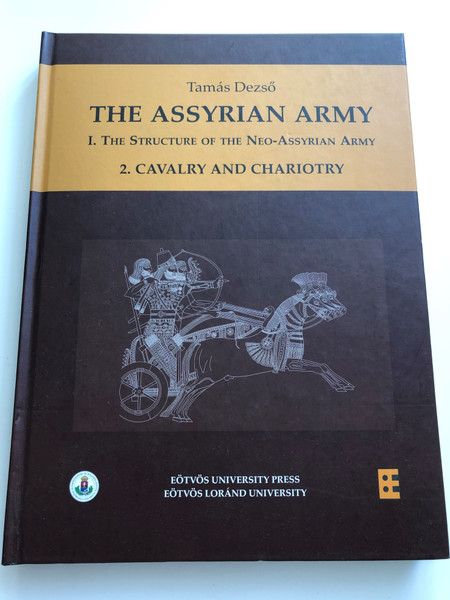Product Overview
The Assyrian Army I/2
The Structure of the Neo-Assyrian Army as reconstructed from Assyrian Palace Reliefs and Cuneiform Sources
2. Cavalry and Chariotry
Author: Dezső Tamás
Assyriologists Archaeologists
INTRODUCTION: One of the most important chapters in the military history of Assyria and the Near East is the development of the cavalry as an independent arm of the army. Although the art of horse riding was known as early as the beginning of the 2nd millennium B.C. the cavalry as an independent, regular arm of an army can be identified for the first time in Assyria during the early 1st millennium B.C. In addition to the earlier Near Eastern use of horsemen as 'mounted messengers,' the first depictions of the cavalry as a fighting arm appear in the palace reliefs of Assurnasirpal II (883--859 B.C.). It is obvious that the first Assyrian (and Near Eastern) cavalry units were not established by Assurnasirpal II, and that other Near Eastern peoples had cavalry units at that time. The horse-breeding peoples of the Zagros and Armenian Mountains certainly used cavalry units among their troops. The earliest appearance of this foreign cavalry is in the palace reliefs of Assurnasirpal II, as fleeing horsemen pursued by the Assyrian chariotry. In this scene an Assyrian chariot (perhaps belonging to the king himself) is pressing six enemy horsemen equipped with bows and swords. It is not known exactly where horsemanship and the cavalry developed, but it probably happened somewhere in the triangle formed by the Armenian Mountains, the Zagros Mountains and Assyria. But it was in Assyria that, in the course of its development, the cavalry became an independent arm of the army. The Assyrians developed the various uses of the cavalry on which the cavalry traditions of later ages were based. The cavalry was divided into lancers and mounted archers at the latest during the reign of Sennacherib, and the armoured cavalryman appeared in the Assyrian army as well. All the important ways of using the cavalry appear in the Assyrian palace reliefs. What is more, the same sculptures show how the cavalry overshadowed and finally replaced the chariotry, which gradually became an obsolete and redundant part of the Assyrian army. The role played by the Assyrian cavalry in the general development of the military use of horsemanship has not been fully recognised. Only a few articles on this topic - based on cuneiform sources or on the depictions of cavalry in palace reliefs - have been published. These studies are, however, highly specialized, and the general summaries of the military history of the Near East still do not lay proper stress on the cavalry developments mentioned above.
Author: Dezső Tamás
Monographs of the Institute of Ancient Studies, Faculty of Humanities, Eotvos Lorand University, Budapest
Assyriologia 8/2 / Antiqua et Orientalia 3
Product Details
- Hardcover: 272 pages
- Author: Tamás Dezső (2012)
- Language: English
- ISBN-13: 978-9633120767 / 9789633120767
- ISBN-10: 9633120764





























